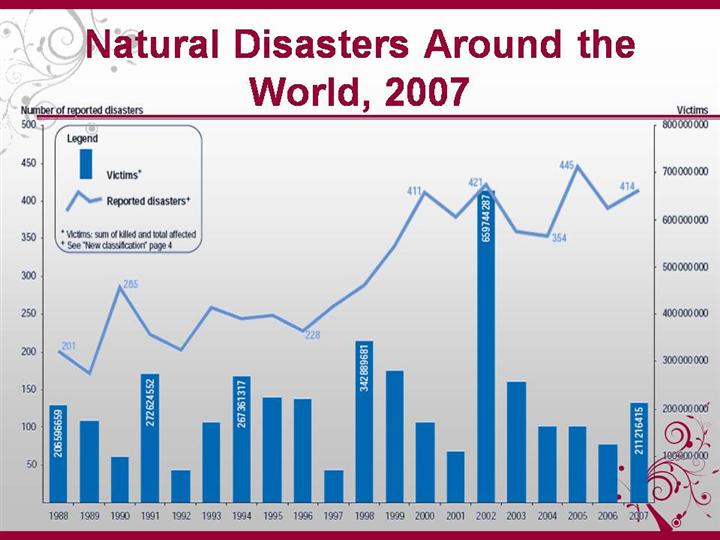| front |1 |2 |3 |4 |5 |6 |7 |8 |9 |10 |11 |12 |13 |14 |15 |16 |17 |18 |19 |20 |21 |22 |23 |24 |25 |26 |27 |28 |29 |30 |31 |32 |33 |34 |35 |36 |37 |38 |39 |40 |41 |42 |43 |44 |45 |46 |47 |48 |49 |50 |review |
 |
In 2007, 414 natural disasters were reported. They killed 16847 persons, affected more than 211 million others and caused over 74.9 US$ billion in economic damages. Europe, also, witnessed several exceptional events like the two floods in the United Kingdom, which affected more than 370 000 people and caused more than US$ 8 billion in economic damages. Nonetheless, Europe remained a region where natural disasters are relatively rare and their impacts are mainly economic rather than human. Indeed, the 65 disasters reported in Europe in 2007 accounted for 27% of the world’s economic damages from natural disasters, but only 1% of the world’s victims. Hydrological (essentially floods) and meteorological (storms) disasters are the major contributors to this pattern. In recent decades, the number of reported hydrological disasters has increased by 7.4% per year on average. Furthermore, we have witnessed a strengthening of the upward trend in recent years, with an average annual growth rate of 8.4% in the 2000 to 2007 period. ______________________________________________ *The sources of data for natural and technological disaster is EM-DAT. The EM-DAT international disaster database (http://www.cred.be/emdat ) is a database on the occurrence and immediate effects of all disasters in the world, from 1900 to the present. It is maintained by the US office of Foreign Disaster Assistance (OFDA) and the WHO Collaborating Centre for Research on the Epidemiology of Disasters (CRED) and is located at the University of Louvain (Belgium). The database is compiled from various sources, including United Nations agencies, non-governmental organizations, insurance companies, research institutes and press agencies. |